Rabies in cattle is a highly fatal viral disease of the central nervous system, which occurs virtually in warm-blooded animals and man. Dogs have been and still are the primary source of Rabies in different countries. Among the farm animals, cattle and goats are most commonly affected. The disease is endemic in animals in Asia, South America, Africa, Rusia, and Western Europe. Rabies is occurring throughout the year, often with the highest incidence in the late summer and autumn.
Important Information on Bovine Rabies
Cattle are the largest population of domestic animals. Cattle helps human beings by providing meat, milk, hides, and fertilizer. Cattle farming is becoming both dairy and beef a part of a business and providing valuable products to the country’s gross domestic product (GDP). As a farm owner, you will face many cattle diseases that are infectious or non-infectious. Rabies in cattle is one of the essential infectious zoonotic diseases that you must be concern about. In my article, I shall discuss the essential information on bovine Rabies for you.
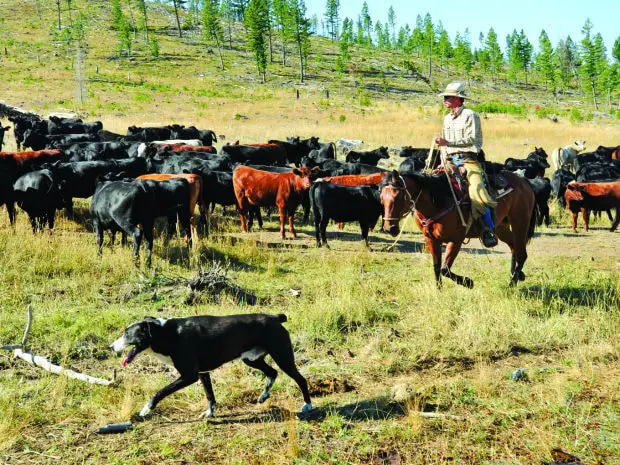
Causes of Rabies in Cattle
Rabies virus of the genus Lyssavirus, under the family Rhabdoviridae, causes Rabies. Lyssaviruses are usually confined to one major reservoir species in a given geographic area. Cattle most often become infected with the disease when they come in contact or biting by infected skunks, bats, unvaccinated dogs, raccoons, or foxes.

Transmission of Rabies in Cattle
The disease is spread by the bites of affected animals like dogs, foxes, raccoons, bats, and skunks. It can also be transmitted by a contaminated fresh wound with the infected animal’s saliva. Saliva is the primary source of the virus being shed through nerves and via the bloodstream; the disease spreads throughout the body.
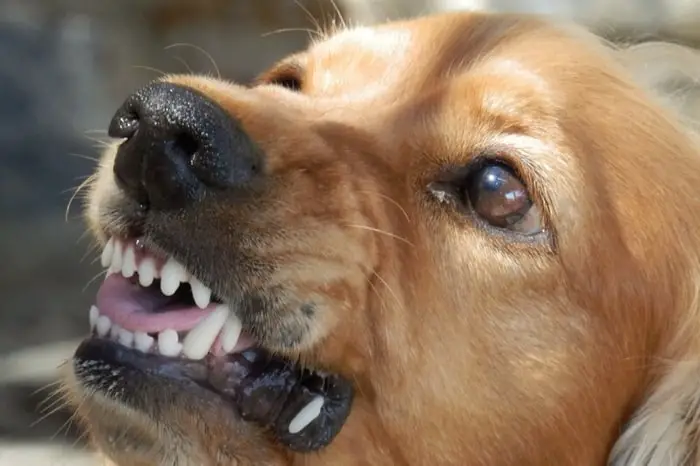
Pathogenesis of the Disease
- In the saliva of infected animals, the rabies virus is introduced into a new host mainly by bite.
- After deep penetration, the virus multiplies in muscle cells, epithelial cells, and connective tissues.
- The second tissue system to become infected is the neuromuscular spindles, which provide a vital virus entry into the nervous system.
- The virus may enter into the nervous system at the motor end-plates.
- The spread of the virus from the infection site into the brain and spinal cord occurs only by way of the peripheral nerves by passive movement of the virus within axons.
- An alternate pathway for spreading the virus via blood or lymph in the severe bite has been suggested.
- After reaching the brain, the virus invades ganglion cells and spread to the peripheral nerves (facial, glossopharyngeal, trigeminal, olfactory).
- The virus may reach salivary glands, thymus, lymph node, taste buds, olfactory cells, and then oral and nasal secretion.
- The saliva’s highly infective nature arises from the passage of the virus along the olfactory nerve to taste buds and other sensory end organs in the oropharynx. Higher viral titer is found in the salivary glands than in the brain.
- A high titer of the virus is also found in the lungs.
- The virus has also been isolated from adrenal glands, kidneys, bladder, ovaries, testicles, sebaceous glands, germinal cellls of hair follicles, cornea, tongue papillae, intestinal wall, fetuses, milk, and other secretions and excretions of the body.
- The virus cannot be demonstrated in the blood at any time.
What are the Symptoms of Rabies in Cattle?
The incubation period is usually about three weeks but varies from 2 weeks to 6 months. The signs and symptoms develop in several stages:
- Initial stage: Depression, anorexia, and decreased milk production. Body temperature is usually average but may be elevated to 103° F to 105° F in the early stages by muscular activities.
- Excitement Stages: the animal has a tense, alert appearance, hypersensitive to sounds and movements, frequently loud bellowing with hoarse sound, sexual excitement especially in bulls, erection of ear, dilated pupils, and excessive salivation. This stage is also called the furious stage.
- Paralytic stage (stage of paralysis): spasmodic contraction disappears gradually when the paralysis of different muscle groups sets in knuckling of the hind fetlocks, sagging and swaying hindquarters while walking, deviation or flaccidity of the tail to one side. Drooling of saliva is one of the most constant signs. Paralysis follows; the animal goes down and is unable to rise. Death usually occurs 48 hours after recumbence and after a full course of 6 to 7 days. This stage is also known as dumb form.
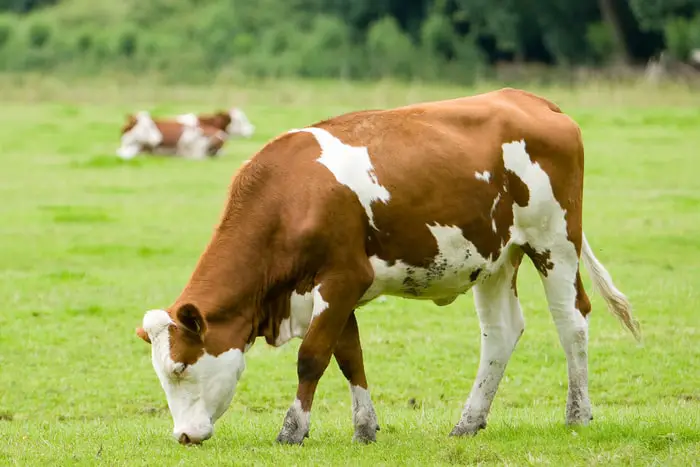
Pathological Lesions of Rabies
- Rabies is characterized by the absence of lesions of a significant degree.
- There is slight congestion of blood vessels and leukocyte accumulation near blood vessels.
- There may be the presence of discrete glial cell clusters resulting from cell proliferation known as ‘Babes nodules.’
- Nerve cells throughout the brain may show degeneration.
- An outstanding finding in Rabies is Negri bodies, which are the accumulation of large aggregates of dense granular viroplasm in the cytoplasm of infected cells.
- Negri bodies are present in the hippocampus of carnivores and Purkinje cells of herbivores.
- On rare occasions, Negri bodies may be noted in the medulla, retina, and salivary glands’ ganglion cells.
- Negri bodies appear as reddish-pink oval or round structures of about 2-8 micron in diameter.
- Mild pulmonary atelectasis and tracheal and bronchial congestion are features in Rabies in cattle.
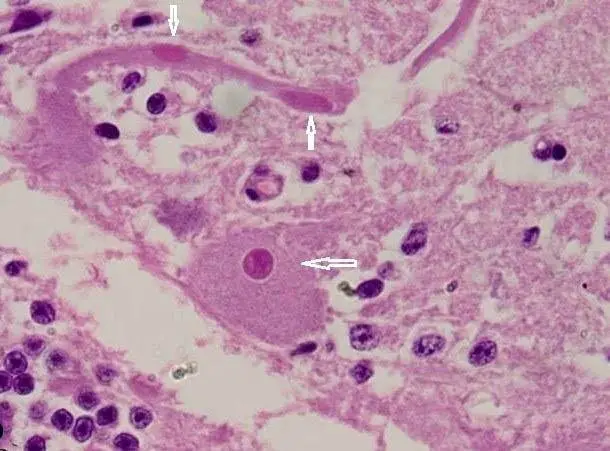
Diagnosis of the Bovine Rabies
The diagnosis of Rabies you can be made on:
- the history of the bite by a rabid dog or carnivorous animals
- Characteristic clinical findings like:
- Excessive salivation.
- Attacking tendency.
- Bellowing.
- An ascending paralysis.
- Confirmation of a diagnosis of Rabies depends on your expert veterinary advice and careful laboratory examination.
- A fluorescent antibody test (FAT) on impression smears from the brain, preferably hippocampus, medulla oblongata, cerebellum, or Gasserian ganglion. FAT could also be conducted on corneal impression smear and saliva smear.
- Enzymes Linked Immunosorbent Assey (ELISA) may be used for the detection of rabies antigens in animals. It is rapid, simple, and economical.
- A histological search for Negri bodies (Intracytoplasmic viral material ) in tissue section with results available in 48 hours.
- An immunoperoxidase test for Rabies can be used on the formalin-fixed, paraffin-embedded brain tissue of animals when fresh samples are not available.
- Intracerebral inoculation of weaned mice with brain tissue which results in weeks or less
- Other tests that may be used are:
- Rapid Rabies Immunoenzymatic Diagnosis (RRIED).
- DOT- Hybridization.
- 32p-cDNA probes to identify the minute quantity of specific viral RNA.
- Polymerase Chain Reaction (PCR).
Differential Diagnosis of Rabies in Cattle
The following disease may be confused with the Rabies in Cattle:
- Acute inflammatory conditions involving the brain and meninges.
- Tumors of the brain.
- Neurotropic disease at certain period: Bovine encephalitis, Pseudorabies, Listeriosis, Scrapie, Lead toxicity, Lactation tetany, Pregnancy toxemia, and Avitaminosis- A.
- Gastrointestinal disturbance, profuse diarrhea, causing convulsions because of dehydration, toxins of eternal nature, extensive parasitism.
- Generalized conditions are causing prostration.
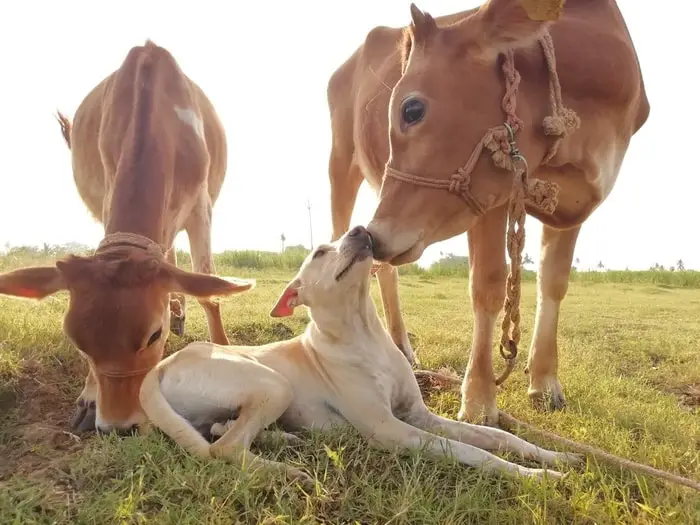
Treatment Strategies of Bovine Rabies
No treatment should be attempted after the appearance of clinical signs of your animal. Immediately after exposure, irrigation of the wound with 20% soft soap solution may prevent the establishment of your cattle’s infection. Antirabies serum treatment is beneficial, and post-exposure immunization may be made to prevent the disease.
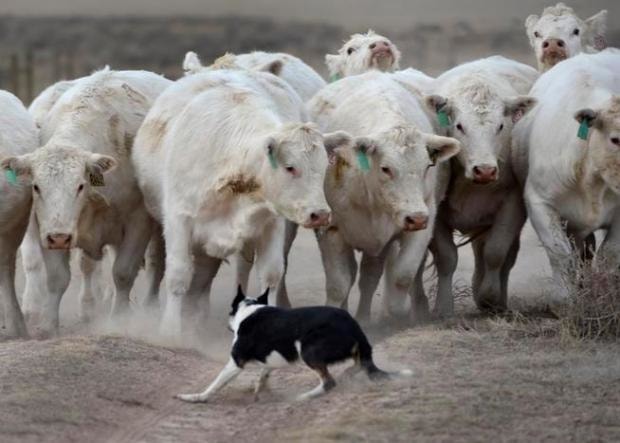
Prevention and Control of Rabies in Cattle
The preventive and control measures are as follows:
- Destruction of all rabid animals.
- Destruction or eradication of all ownerless dogs.
- Quarantine and tie-up of all dogs during the epizootic.
- Immunization of all dogs or animals in a herd.
- Vaccination of all exposed animals.
- Control of wild animal reservoirs.
- Pre-exposure immunization for individuals like your veterinarians, animal attendants, and farm workers.
Final Advice on Rabies in Cattle
Rabies is a highly fatal infectious and zoonotic viral disease of cattle, goats, and warm-blooded animals. The disease is mainly transmitted by rabid dogs, wild animals like foxes, bats, raccoons, and skunks. Saliva is the primary source of virus in the infected animals and transmitted by a biting wound to a healthy animal. You can prevent disease entry by controlling the wild animals and street dogs on your farm and pre-exposure vaccination against Rabies.